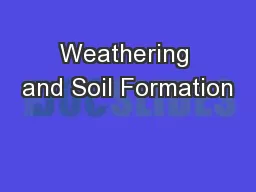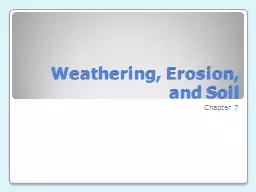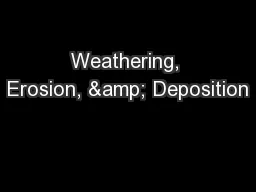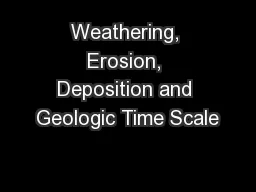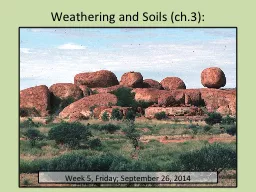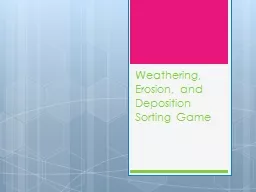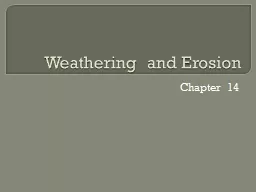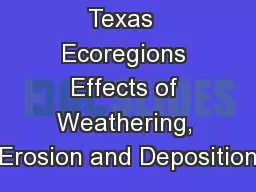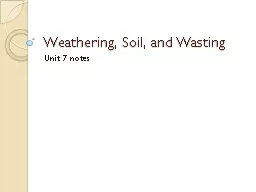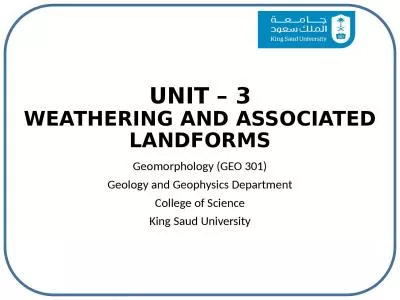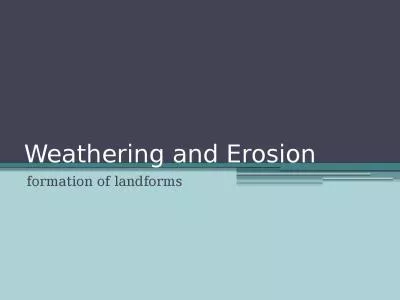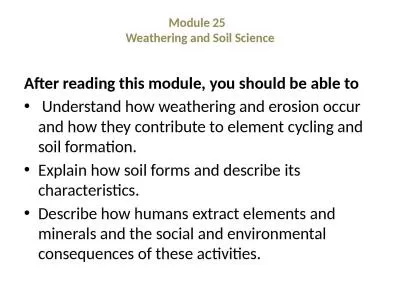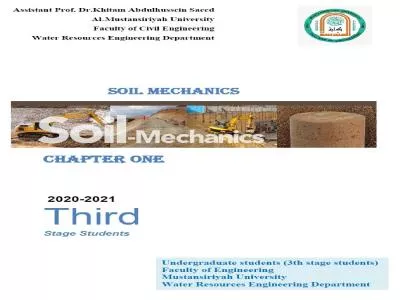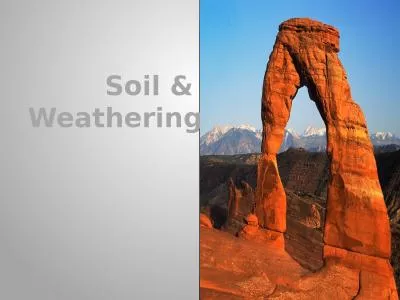PPT-Weathering and Soil Formation
Author : test | Published Date : 2017-01-28
Weathering The process that breaks down rock and other substances at Earths surface Factors that contribute to weathering include Heat cold water ice oxygen and
Presentation Embed Code
Download Presentation
Download Presentation The PPT/PDF document "Weathering and Soil Formation" is the property of its rightful owner. Permission is granted to download and print the materials on this website for personal, non-commercial use only, and to display it on your personal computer provided you do not modify the materials and that you retain all copyright notices contained in the materials. By downloading content from our website, you accept the terms of this agreement.
Weathering and Soil Formation: Transcript
Download Rules Of Document
"Weathering and Soil Formation"The content belongs to its owner. You may download and print it for personal use, without modification, and keep all copyright notices. By downloading, you agree to these terms.
Related Documents

